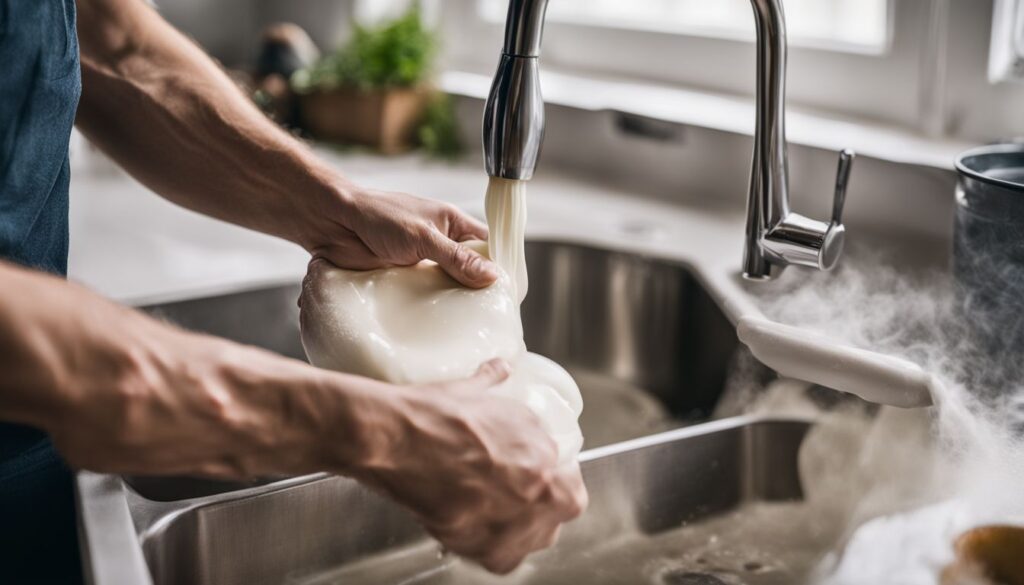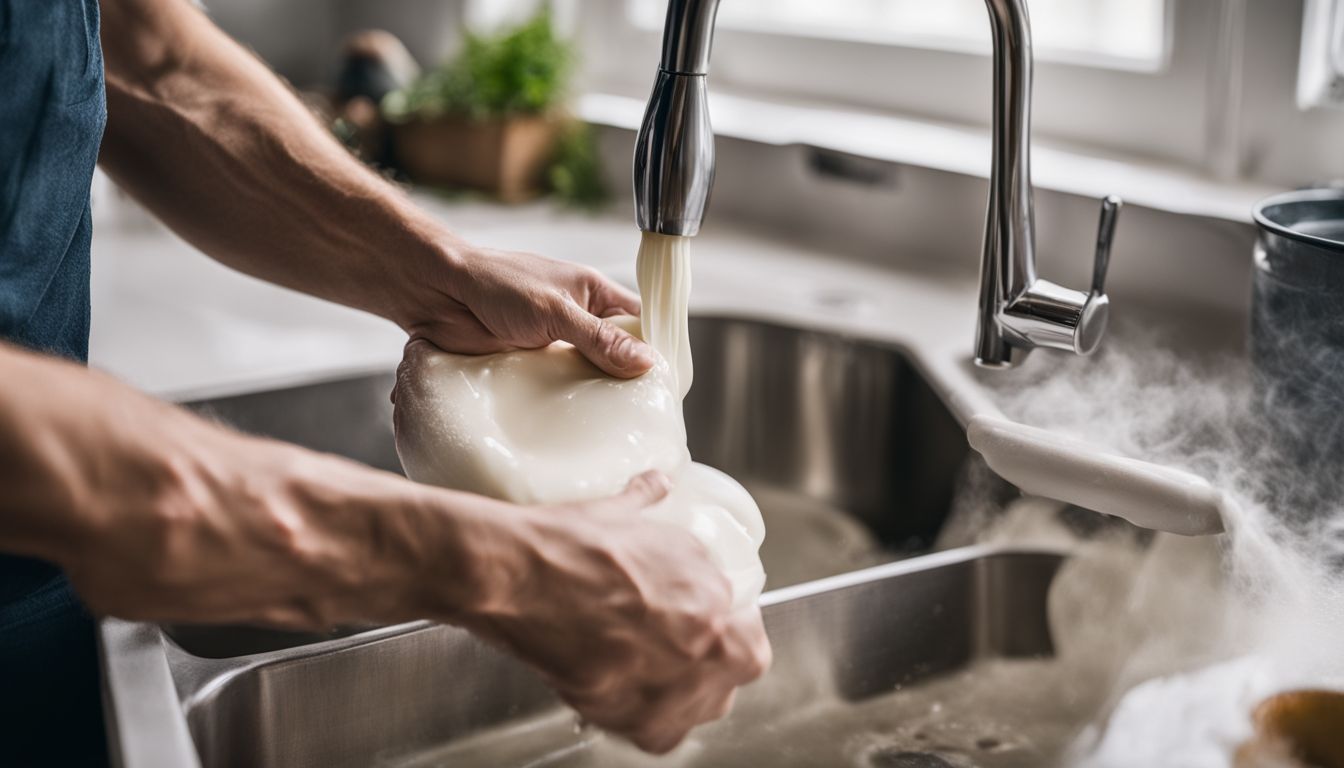
Wood Putty Drying Hacks You Won’t Believe: Secrets to a Flawless Finish
The seemingly simple task of filling imperfections in wood with wood putty can quickly turn into a frustrating experience. You apply the putty, eagerly anticipate a seamless finish, and then… disaster. The putty shrinks, cracks, or takes an eternity to dry. But fear not, fellow woodworkers and DIY enthusiasts! This article unveils the wood putty drying hacks you won’t believe, transforming your projects from frustrating failures to stunning successes. We delve into the science behind wood putty, explore common pitfalls, and provide actionable tips to achieve a flawless, durable finish every time.
The quest for the perfect finish often begins with addressing imperfections in the wood. Whether it’s filling nail holes, covering knots, or repairing small cracks, wood putty is the go-to solution. However, the drying process is where many projects go awry. Understanding how wood putty dries and the factors that influence it is the first step towards mastering the art of a flawless finish. This article will equip you with the knowledge and techniques to conquer this crucial step.
Understanding Wood Putty and Its Drying Process
Wood putty isn’t just a generic filler; it’s a complex compound that reacts to its environment. Its composition, the wood it’s applied to, and the surrounding conditions all play a vital role in how quickly and effectively it dries. Different types of wood putty exist, each with its own unique characteristics and drying times. Understanding these differences is key to choosing the right product for your specific project.
Types of Wood Putty
- Solvent-Based Wood Putty: These putties typically contain solvents that evaporate as they dry. They often dry faster than water-based putties but can shrink more significantly. They are also known for having a stronger odor.
- Water-Based Wood Putty: These putties dry through evaporation of water. They tend to shrink less than solvent-based putties and are often easier to clean up. They generally take longer to dry.
- Epoxy Wood Putty: Epoxy putties are two-part systems that cure through a chemical reaction. They are known for their exceptional durability and are often used for structural repairs. Drying time depends on the specific epoxy product.
Factors Affecting Drying Time
Several factors influence how quickly wood putty dries:
- Temperature: Warmer temperatures generally accelerate drying, while colder temperatures slow it down.
- Humidity: High humidity slows drying, as the air is already saturated with moisture.
- Ventilation: Good ventilation promotes faster drying by removing moisture and solvent vapors.
- Thickness of Application: Thicker applications of putty take longer to dry than thinner ones.
- Type of Wood Putty: As mentioned earlier, different types of putty have different drying characteristics.
- Wood Species: The wood itself can influence drying. Some woods absorb moisture more readily than others.
Common Wood Putty Drying Problems and How to Solve Them
Even with the best intentions, problems can arise during the wood putty drying process. Recognizing these issues and knowing how to address them is crucial for a successful outcome.
Shrinking and Cracking
One of the most common problems is shrinking and cracking. This often occurs with solvent-based putties or when applying thick layers. To prevent this:
- Apply in Thin Layers: Build up the putty in multiple thin layers, allowing each layer to dry completely before applying the next.
- Choose the Right Putty: Opt for a putty with low shrinkage properties, such as a high-quality water-based putty.
- Control the Environment: Ensure adequate ventilation and avoid extreme temperature fluctuations during drying.
Slow Drying
Slow drying can be frustrating, especially when you’re eager to move on to the next step. To speed up the process:
- Increase Ventilation: Open windows and doors or use a fan to improve air circulation.
- Adjust Temperature: If possible, increase the ambient temperature slightly. Avoid extreme heat.
- Use a Drying Accelerator: Some wood putties are compatible with drying accelerators, which can speed up the drying process. Always follow the manufacturer’s instructions.
Color Discrepancies
Sometimes, the dried wood putty might not match the surrounding wood color. This can be due to several factors:
- Incorrect Color Match: Choose a wood putty that closely matches the color of the wood you’re working with.
- Absorption Differences: The wood putty might absorb stain differently than the wood.
- Sunlight Exposure: Sunlight can fade or alter the color of both the wood and the putty.
To address color discrepancies:
- Test Before Application: Always test the wood putty on a scrap piece of wood to ensure a good color match.
- Use Stainable Putty: Consider using a stainable wood putty, which allows you to match the color with a stain.
- Protect from Sunlight: Avoid direct sunlight exposure during drying and after the project is complete.
Wood Putty Drying Hacks: Proven Techniques for a Flawless Finish
Now, let’s dive into the wood putty drying hacks that will revolutionize your woodworking projects. These techniques, gleaned from seasoned professionals, will help you achieve a flawless, durable finish.
Proper Surface Preparation
Before applying wood putty, proper surface preparation is paramount. This includes:
- Cleaning the Surface: Remove any dust, dirt, or debris from the area to be filled. Use a tack cloth or compressed air.
- Sanding the Edges: Lightly sand the edges of the area to be filled to create a slightly rough surface for better adhesion.
- Applying Primer (Optional): For some projects, applying a primer before the putty can improve adhesion and prevent the putty from absorbing too much of the stain.
The Thin Layer Approach
One of the most critical hacks is applying wood putty in thin layers. This minimizes shrinkage and cracking and allows for faster drying. Apply a thin layer, let it dry completely, and then apply another if needed. This layering technique is a cornerstone of successful wood putty application.
Controlling the Environment
As previously discussed, the environment plays a significant role in drying time. Optimize the environment by:
- Ventilation: Ensure good air circulation by opening windows and doors or using fans.
- Temperature: Maintain a moderate temperature, avoiding extreme heat or cold.
- Humidity: Keep humidity levels in check. A dehumidifier can be helpful in humid environments.
Using a Hair Dryer (With Caution)
A hairdryer can be used to speed up the drying process, but use it with caution. Excessive heat can cause the putty to crack or bubble. Use the hairdryer on a low setting and hold it a safe distance from the surface. Direct the airflow evenly across the putty, not concentrating on one spot. This technique can be one of the useful wood putty drying hacks, but proper execution is key.
Using a Heat Lamp (With Caution)
Similar to a hairdryer, a heat lamp can accelerate drying. However, it carries the same risks of cracking and bubbling if used improperly. Maintain a safe distance and monitor the putty closely. Heat lamps should be used with extreme caution and only when necessary, and is one of the less frequently used wood putty drying hacks.
Choosing the Right Putty
The type of wood putty you choose significantly impacts the drying process. Consider:
- Water-Based Putty: Generally preferred for their low shrinkage and ease of cleaning.
- Solvent-Based Putty: Dries faster but can shrink more.
- Epoxy Putty: Durable but requires careful mixing and application.
- Matching the Wood: Always choose a putty that closely matches the color of the wood or is stainable.
The Importance of Patience
Perhaps the most important of all the wood putty drying hacks is patience. Rushing the drying process can lead to disastrous results. Allow the putty to dry completely before sanding, staining, or applying any finish. This patience will pay off in a flawless, durable finish.
Advanced Tips and Techniques
For those seeking even greater mastery, consider these advanced tips:
Mixing Putty Correctly
For two-part epoxy putties, proper mixing is crucial for optimal performance. Follow the manufacturer’s instructions carefully to ensure the putty cures correctly. Inadequate mixing can lead to soft spots and reduced durability.
Sanding Techniques
Once the wood putty is completely dry, proper sanding is essential. Use progressively finer grits of sandpaper to achieve a smooth, even surface. Be careful not to sand away the putty. A well-sanded surface is critical for the final finish.
Staining and Finishing
After sanding, apply your chosen stain and finish. Follow the manufacturer’s instructions for the stain and finish products. Remember that the wood putty might absorb stain differently than the wood, so test the stain on a scrap piece of wood first. The correct application of stain and finish is the final step in achieving your desired result.
Conclusion: Mastering the Art of Wood Putty
Mastering wood putty and its drying process is an essential skill for any woodworker or DIY enthusiast. By understanding the different types of wood putty, the factors that influence drying time, and the proven techniques outlined in this article, you can achieve a flawless, durable finish every time. Remember to apply putty in thin layers, control the environment, choose the right putty, and, most importantly, be patient. With these wood putty drying hacks in your arsenal, you’ll be well on your way to woodworking success. Wood putty is a vital tool for many projects. Mastering the drying process is a key component for a great outcome. The tips provided here will help you avoid common pitfalls. These wood putty drying hacks will save you time and effort. The right approach is key to success.
Embrace these wood putty drying hacks and elevate your woodworking projects to the next level! With the right knowledge and techniques, the seemingly simple task of using wood putty can transform into a source of pride and satisfaction. The information provided here is designed to help you avoid frustration. By using the correct wood putty and following the advice, you can achieve amazing results. These wood putty drying hacks will help you create beautiful pieces. The use of wood putty is a common practice. The information here can help you choose the best wood putty for your needs. Remember these wood putty drying hacks to achieve the best outcomes!
[See also: Related Article Titles]


